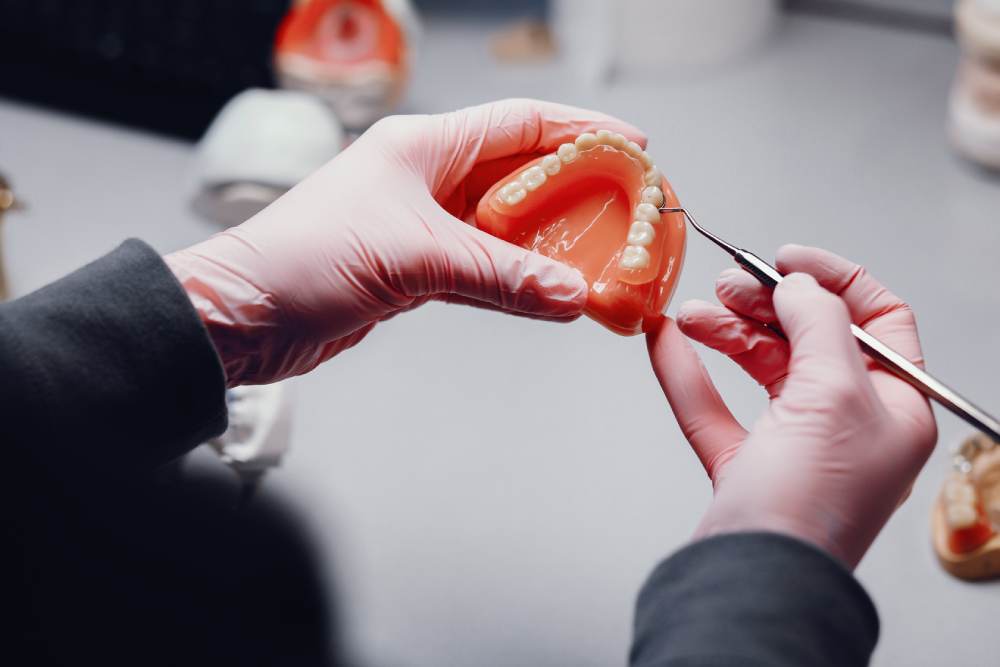Veneers are a cornerstone of modern cosmetic dentistry, but have you ever wondered where it all began? Who first envisioned the idea of transforming smiles with these thin, transformative shells? The story of veneers is fascinating, tracing back to a breakthrough that changed dentistry forever. Join us as we explore the origins of this revolutionary dental innovation.
Get veneers in Manhattan for a perfect smile today.

Who Was Behind the Creation of the First Veneers for Teeth?
In 1928, Charles Pincus, a California dentist, introduced the first dental veneers, an innovation that transformed cosmetic dentistry.
This invention emerged in Hollywood, where physical appearance played a significant role in professional success. Pincus, working with actors and actresses who needed flawless smiles for the big screen, developed an ingenious method to temporarily cover dental imperfections.
Although the original veneers were not perfect, they fulfilled their purpose of creating a “Hollywood smile” during filming. This term, associated with dazzling smiles, became synonymous with glamour and aesthetic perfection. Pincus set a standard for dental beauty that remains influential today.
Before veneers, dentistry focused more on function than appearance. Treatments aimed to alleviate pain or restore basic function but rarely considered looks. Pincus demonstrated that teeth could be both functional and a tool to enhance personal image and self-esteem.
The Origins of Dental Veneers: Early Innovations
Pincus’ first veneers were temporary solutions designed to quickly and effectively cover dental imperfections. Made from basic materials, they adhered to teeth using an adhesive similar to that used for dentures. Though short-lived, they represented a revolutionary advancement in cosmetic dentistry.
Features of the First Veneers
- Material: Simple plastics or acrylics designed to cover visible defects.
- Attachment Method: Temporary adhesive that could be removed after use.
- Durability: Lasted only a few hours or days, ideal for filming or special events.
Historical Context
In the 1920s, the film industry was booming with the advent of sound cinema. This shift brought greater focus on actors, whose appearances needed to be flawless in close-ups. Pincus identified this need and developed a solution tailored to Hollywood’s standards.
Initial Limitations
Pincus’ veneers were temporary, limiting their usefulness for the general public. Additionally, available materials did not allow for durable or natural-looking veneers, restricting their application to specific contexts.
How the First Veneers Changed Cosmetic Dentistry?
Despite their limitations, Pincus’ veneers revolutionized cosmetic dentistry by introducing a new concept: enhancing smiles for both function and aesthetics. This innovation began a transformation that continues today.
Immediate Impacts
- Shift in Dental Priorities: Dental appearance became as important as oral health.
- Expanded Access to Dental Aesthetics: Veneers laid the groundwork for broader interest in improving smiles.
- Inspired Future Innovations: Dentists explored better materials and techniques to create more accessible and durable veneers.
Technological Evolution
- 1950s: Permanent porcelain veneers were introduced, offering greater durability and natural appearance.
- 1980s: Advanced adhesives made long-term veneers practical.
- Today: Digital technology and innovative materials create veneers that are highly realistic and durable.
Emotional Benefits
Veneers had a significant psychological impact. People with damaged or misaligned teeth gained confidence with smiles that reflected health and beauty.
Modern Advances in Veneer Technology and Techniques
Today, veneers are one of the most popular treatments in cosmetic dentistry due to advancements in materials, techniques, and technology. These improvements have made veneers thinner, stronger, and more natural-looking.
Material Advancements
- Ultrathin Porcelain: Allows nearly invisible veneers with minimal tooth preparation.
- Enhanced Composite: A cost-effective solution for minor corrections.
- Nanotechnology: Materials that mimic natural enamel texture and appearance for added durability.
Innovative Techniques
- 3D Scanners: Capture precise images of the mouth, eliminating traditional molds.
- Digital Smile Design: Lets patients preview results before treatment begins.
- 3D Printing: Produces custom veneers quickly and accurately.
Functional and Aesthetic Benefits
Modern veneers correct both appearance and functionality, addressing issues like:
- Excessive tooth wear.
- Minor misalignments.
- Large gaps between teeth.
- Damage from trauma.
A Legacy of Innovation and Smiles
Charles Pincus’ legacy lives on in every smile transformed by veneers. What began as a temporary fix for Hollywood stars has become a global tool for enhancing quality of life.
The “Hollywood Smile” as a Global Phenomenon
Millions now associate a bright, aligned smile with confidence and success. This demand has popularized veneers among celebrities and everyday individuals alike.
The Evolution of Veneers
Initially a luxury for film stars, veneers are now accessible to a wide range of people thanks to technological advances that reduced costs and simplified procedures. This has made veneers faster and less invasive, increasing their appeal.
Beyond aesthetics, veneers profoundly boost self-esteem. By correcting discolorations, wear, or uneven alignment, these thin shells allow patients to feel more secure in their appearance. This newfound confidence positively influences social interactions and professional opportunities, making veneers a transformative investment in overall quality of life.
The Future of Dental Veneers
Modern dentistry continues to advance toward more effective and sustainable treatments. The development of biomaterials not only enhances dental aesthetics but also supports natural tissue regeneration. These innovations restore dental health and functionality while achieving superior aesthetic results.
Sustainability is also gaining importance in dental practice. Many dentists now use recyclable materials and eco-friendly manufacturing processes for veneers. These efforts combine environmental care with high-quality results.
From Charles Pincus’ invention in 1928 to today’s advanced techniques and materials, veneers have evolved from a Hollywood innovation into a powerful tool for transforming lives. This enduring legacy of beauty and innovation has redefined cosmetic dentistry, empowering countless individuals with the confidence of a radiant smile.
Sources:
- Dietschi, D., & Devigus, A. (2011). Prefabricated composite veneers: historical perspectives, indications and clinical application. Eur J Esthet Dent, 6(2), 178-87.
- Rashid, R., & Ayoub, W. U. (2017). Veneers: Modern approach of dentistry-a review. International Journal of Advance Research, Ideas and Innovations in Technology, 3(5), 107-111.
